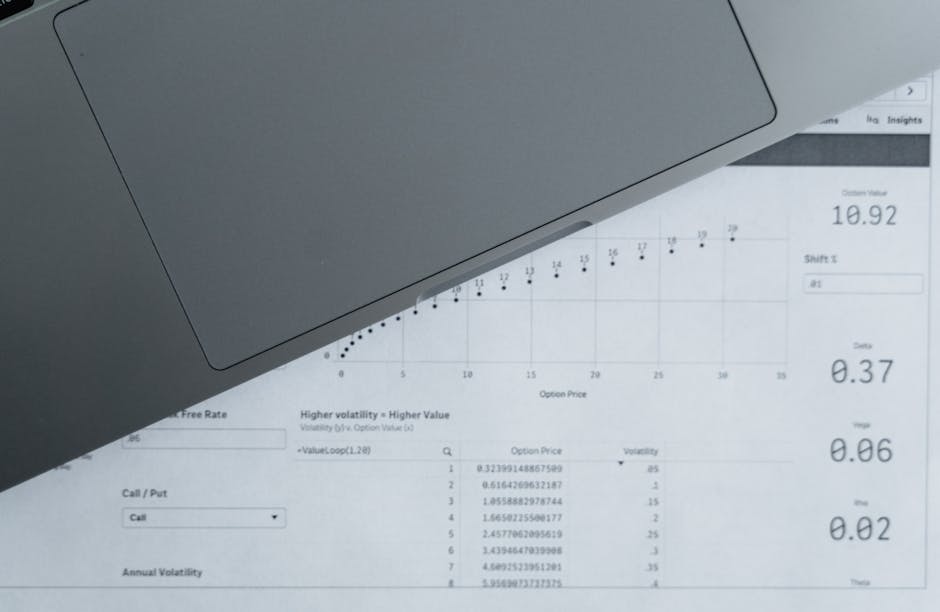Market penetration calculation is a crucial metric for businesses aiming to understand their reach within a specific industry. To perform market penetration calculation, follow these steps:
- Identify the number of customers who have bought your product.
- Determine the total target market size, which is the total number of potential customers you could serve.
- Calculate the penetration rate using this formula:
[ \text{Market Penetration Rate} = \left( \frac{\text{Number of Customers}}{\text{Total Target Market Size}} \right) \times 100 ]
This calculation helps businesses evaluate their market share and identify growth opportunities.
At its core, market penetration calculation serves as a vital tool for businesses to assess their standing in the market. It’s a way to measure success by quantifying the percentage of potential customers a company has captured. For entrepreneurs and business leaders, understanding this metric is essential for strategic planning and improving competitive positioning.
I’m Gabrielle Reese. With a background in business administration and experience in market analysis, I’ve helped numerous entrepreneurs master market penetration calculation to boost their growth strategies. Now, let’s dig deeper into this essential business concept.
Market penetration calculation terms to learn:
– market penetration strategy example
– market penetration vs market development
Table of Contents
ToggleUnderstanding Market Penetration
Market penetration measures the extent to which a product or service is used by customers compared to the total estimated market for that product. It reflects your business’s presence in the market, highlighting not just sales but the share of the market you’ve captured.
Market Share vs. Market Penetration
Market penetration focuses on the number of customers you have within the target market, while market share refers to the percentage of total sales in an industry that your company represents. For instance, if your company sells 1,000 units in a market where 10,000 units are sold in total, your market share is 10%. However, if the total potential market is 20,000 customers, your market penetration is only 5%.
Target Market and Total Addressable Market (TAM)
Understanding your target market is essential. These are the specific customers you aim to serve. To get a comprehensive view, consider the Total Addressable Market (TAM), which represents the total revenue opportunity available if you achieved 100% market share with your product or service. It provides a big-picture view of potential growth if you could reach every potential customer.
Here’s a simple breakdown:
- Target Market: The specific group of potential customers you aim to capture.
- TAM: The entire market demand for your product or service.
Competitive Standing
Your competitive standing is how well you perform compared to others in your market. A high market penetration rate can position you as a market leader, offering advantages like brand loyalty and better supplier terms. Companies like Apple and Samsung dominate the smartphone market by maintaining high market penetration, which in turn strengthens their competitive standing.
Understanding your position can help you identify opportunities for improvement and areas where you might be losing ground.
How to Calculate Market Penetration
Calculating market penetration helps you understand how much of the market you’ve captured. It’s like knowing how much of the pie you’ve eaten compared to the whole pie.
Market Penetration Calculation Formula
To calculate the market penetration, you need two key pieces of information:
- Number of Customers: How many people have bought your product?
- Target Market Size: How many potential customers are there in total?
The formula is straightforward:
[
\text{Market Penetration Rate} = \left( \frac{\text{Number of Customers}}{\text{Target Market Size}} \right) \times 100
]
This formula gives you a percentage that shows how much of the target market you have captured.
Example:
Imagine you have a vegan hand cream and have sold it to 12 million customers. If your target market is 200 million city-dwelling young women, your market penetration rate would be:
[
\left( \frac{12 \text{ million}}{200 \text{ million}} \right) \times 100 = 6\%
]
This means you’ve captured 6% of your target market.
Market Penetration Rate
The market penetration rate is a crucial metric. It tells you how well you’re doing in reaching your target market. A higher rate means more of your target market is buying your product.
Steps to Calculate:
-
Identify Your Target Market Size: Use demographic data or market research tools to estimate this.
-
Count Your Customers: Look at sales data to find out how many unique customers have bought from you.
-
Apply the Formula: Plug these numbers into the formula above to get your market penetration rate.
Why It Matters:
- Benchmarking: Compare your penetration rate against competitors to see where you stand.
- Strategic Planning: If your rate is low, it may be time to rethink your marketing or product strategies.
- Growth Opportunities: A high rate might indicate market saturation, signaling the need to explore new markets or products.
Strategies to Increase Market Penetration
Increasing market penetration is all about capturing a larger slice of your existing market. Here are some strategies to help you do just that:
Change Product Pricing
One of the simplest ways to boost market penetration is by adjusting your pricing strategy. Lowering prices can attract cost-conscious customers, pulling them away from competitors. This approach, known as penetration pricing, can be particularly effective for new entrants looking to disrupt an existing market. But be careful to avoid price wars, as they can hurt your brand and profits. Instead, focus on reducing input costs and improving profit margins through economies of scale.
Create New Products
Innovation is key to staying ahead. By investing in research and development, companies can create new products that meet unmet customer needs. This can involve studying existing products, identifying gaps, and offering something new and valuable. For instance, tech companies like Apple frequently release updated versions of their products to keep customers engaged and willing to upgrade.
Target New Geographies
Expanding into new geographic areas can open up fresh market opportunities. With the rise of online sales, many businesses can reach wider markets than they might realize. For service companies limited to one region, expanding to a new area can be a game-changer. This can be done without leaving the original location by leveraging success at an existing site to fund operations in a new one.
Seek Partnerships
Forming partnerships can be a powerful way to penetrate new markets. Consider the partnership between Barnes & Noble and Starbucks, where Starbucks cafes inside bookstores allowed both brands to reach new customers. Successful partnerships require careful brand integration to ensure a seamless customer experience.
Innovate Existing Products
Sometimes, updating existing products can be more effective than creating new ones. Listening to customer feedback and keeping up with technological advancements can guide these updates. This strategy is evident in the frequent releases of updated tech gadgets like smartphones and gaming consoles, which offer new benefits and encourage customer upgrades.
Acquire Other Companies
Acquisitions can provide instant access to new products, markets, and customer bases. By acquiring a company, you can quickly increase your market share and leverage new technologies, skills, and relationships. However, successful integration is key to realizing the full benefits of an acquisition.
Create Promotional Opportunities
Offering temporary discounts or promotions can attract new customers. This strategy can lead to short-term success by luring consumers with low prices. However, it’s important to ensure that these promotions align with your brand strategy and attract the right audience.
Invest in Sales Representatives
Having a strong sales team is crucial for market penetration. Sales representatives are the bridge between your product and the market. Investing in training and increasing the headcount of skilled sales reps can help communicate your product’s value and close more sales. A well-equipped sales team can significantly boost market communication and customer engagement.
By implementing these strategies, companies can effectively increase their market penetration, reach new customers, and improve their competitive standing.
Advantages and Disadvantages of Market Penetration
Market penetration is a strategy that can offer significant benefits, but it also comes with potential risks. Let’s explore both:
Advantages
-
Increased Sales: Successfully penetrating a market often leads to a rise in sales. For example, Microsoft increased its market share by bundling its operating systems with other software. This approach can help capture a larger portion of the market.
-
Improved Product Visibility: Greater market penetration means more exposure for your products. Starbucks exemplifies this by opening more stores in areas where they already have a presence, making their brand highly visible. This increased visibility can lead to more customer engagement and loyalty.
-
Building Brand Equity: With greater market penetration, your brand can become associated with quality and reliability. Zara has built strong brand equity through its fast fashion model, making it a popular choice for trendy clothing. A strong brand can command customer loyalty and premium pricing.
Disadvantages
-
Brand Confusion: Expanding too quickly or using inconsistent branding can confuse customers. If your brand appears in unexpected places or with mismatched messaging, it can dilute your brand image. For instance, a Starbucks inside a hardware store might seem out of place to customers.
-
Attracting the Wrong Customer Base: Temporary promotions or deep discounts can attract bargain hunters who may not be loyal. If your brand is positioned as premium, attracting price-sensitive customers might not align with your long-term strategy.
-
Strategic Misalignment: Without careful planning, market penetration efforts can deviate from your core business strategy. For example, if your focus is on quality, slashing prices might send the wrong message and harm your brand reputation.
Market penetration is a powerful strategy but requires a balanced approach. Companies must weigh the benefits of increased sales and brand visibility against the risks of brand confusion and strategic misalignment.
Next, let’s look at real-world examples of successful market penetration to see how leading companies navigate these challenges.
Examples of Market Penetration
Case Study: Apple Inc.
Apple is a prime example of successful market penetration in the smartphone industry. As of the first quarter of 2024, Apple held a 17% market share, trailing just behind Samsung with 20% market share in the global smartphone market. This achievement is largely due to Apple’s consistent innovation and strategic product improvements.
Apple’s strategy revolves around releasing new versions of its iPhone with compelling upgrades each year. This approach not only keeps existing customers engaged but also attracts new ones from competitors. The company has maintained its market share despite fierce competition from brands like Xiaomi and Vivo.
Apple’s competitive strategy is centered on product innovation and brand loyalty. By focusing on premium features and a seamless user experience, Apple differentiates itself in a crowded market. This differentiation allows Apple to set its own pricing, rather than being a price taker, and maintain a strong brand image.
However, Apple still sees opportunities for growth. By targeting Samsung’s customer base, Apple aims to increase its market share further. This tactic involves highlighting the unique benefits of the iPhone to lure customers away from competitors.
Case Study: Telecommunication Industry
The telecommunication industry provides a broader perspective on market penetration, showcasing both challenges and opportunities. In a country with a population of 100 million, if 60 million people own cell phones, the market penetration is 60%. This leaves a significant portion, 40%, as untapped potential.
For telecom companies, reaching this untapped market is crucial for growth. In saturated markets, where most of the population already owns cell phones, growth opportunities shrink. Companies must then focus on market development strategies like offering new services or improving existing ones to capture more customers.
In contrast, in markets with lower penetration rates, such as 20% untapped potential, companies have more room to grow. They can target these segments with more aggressive marketing and pricing strategies to increase their customer base.
The telecommunication industry’s experience highlights the importance of understanding market saturation and targeting untapped segments for growth. Companies must balance their efforts between penetrating existing markets and expanding into new ones to maximize their potential.
These case studies illustrate how companies can effectively use market penetration strategies to grow their market share and maintain a competitive edge. By focusing on product innovation and strategic targeting, companies like Apple and those in the telecom industry have successfully steerd the complexities of market penetration.
Frequently Asked Questions about Market Penetration Calculation
What is the formula for market penetration calculation?
The formula for market penetration calculation is quite straightforward:
[ \text{Market Penetration Rate} = \left( \frac{\text{Number of Customers}}{\text{Target Market Size}} \right) \times 100 ]
This formula helps businesses determine what percentage of the total available market they have captured with their product or service. For example, if a company has 10,000 customers and the total target market size is 100,000, the market penetration rate would be 10%.
How do you calculate the market penetration rate?
To calculate the market penetration rate, follow these simple steps:
-
Identify the number of customers: This is the total number of unique customers who have purchased your product or service. Use CRM or sales data to obtain this number.
-
Determine the target market size: This is the total number of potential customers who could buy your product. It might require market research to estimate this figure accurately.
-
Apply the formula: Use the formula provided above to calculate the market penetration rate.
For example, let’s say a beauty company sells 20,000 units of a skincare product, and their target market size is 500,000 potential customers. The market penetration rate would be:
[ \left( \frac{20,000}{500,000} \right) \times 100 = 4\% ]
This means the company has captured 4% of its target market.
What factors affect the market penetration rate?
Several factors can influence the market penetration rate:
-
Market Size: A larger target market size can make it more challenging to achieve a high penetration rate, while a smaller market might be easier to penetrate.
-
Competition: The presence of strong competitors can limit your ability to increase your market penetration.
-
Product Differentiation: Unique features or benefits can help your product stand out and attract more customers.
-
Pricing Strategies: Competitive pricing can attract price-sensitive customers, boosting your penetration rate.
-
Distribution Channels: Wider distribution increases product accessibility, which can improve market penetration.
-
Customer Loyalty: High customer retention often leads to a higher penetration rate as loyal customers continue to buy from you.
Understanding these factors can help businesses tailor their strategies to improve their market penetration rate effectively.
Conclusion
At Versed Entrepreneur, we believe that mastering market penetration is crucial for any business aiming for strategic growth and a competitive advantage. This comprehensive guide has provided you with the tools and insights needed to understand and calculate market penetration, as well as strategies to increase it.
Market penetration is more than just a metric—it’s a pathway to expanding your market share and strengthening your brand. By understanding your target market and effectively reaching out to potential customers, you can significantly boost your presence in existing markets. Companies like Apple and Coca-Cola have shown us that with the right strategies, even saturated markets offer room for growth.
Strategic growth through market penetration involves a mix of pricing strategies, product innovations, and expanding your reach through new geographies or partnerships. These tactics not only increase your market share but also improve your brand’s visibility and equity.
However, it’s important to be mindful of potential disadvantages, such as brand confusion and strategic misalignment. Balancing these risks with the benefits of increased sales and visibility is key to a successful market penetration strategy.
For more expert tips and resources on business strategies, visit our Marketing section.
Disclaimer: This article is for informational purposes only and does not constitute legal or financial advice. Please consult a professional advisor for personalized advice.










